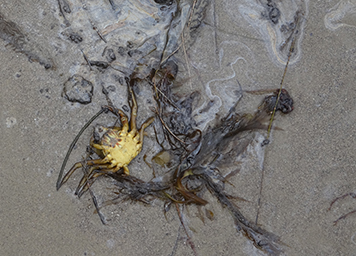CAFE to Predict the Fate and Effects of Chemicals and Oils during Spills
JULY 17, 2015--New software from NOAA’s Office of Response and Restoration could serve as a one-stop rapid response tool to aid spill responders as they assess the environmental effects of chemical or oil spills.
The free software, known as the Chemical Aquatic Fate and Effects database, or CAFE, can show how an array of chemicals, oils and dispersants can interact with bodies of water and their ecosystems.
“For the first time we have a complete database of thousands of chemicals that gives basic answers to questions that arise when those chemicals are released to the environment,” said Dr. Jim Farr, NOAA chemist and project leader. “This tool will help predict the outcome and the toxic effects of chemicals on biological organisms in aquatic environments.’”
The CAFE database has information for the fates of approximately 30,000 chemicals, and more than 100,000 toxicity records for chemicals, oils, dispersants and chemically dispersed oils. CAFE’s fate information comes from a variety of different sources including the Hazardous Substance Data Bank, Syracuse Research Corporation’s PHYSPROP database, EPA’s EPI suite models and more. CAFE’s toxicity records primarily come from the EPA’s ECOTOX database.
CAFE’s toxicity records are plotted onto species sensitivity distribution curves based on acute effects, and concentrations of toxic substances, such as levels LC50 or EC50, for various exposure times, such as 24, 48, 72 or 96 hours. These curves describe the sensitivity of aquatic species to the toxic substance, by ranking the relative sensitivity of the species tested from the least to most sensitive.
In addition, short exposure risk reports for a selected number of chemicals are also included in CAFE. There is also a section allowing CAFE users to add their own data to the database’s plots.
The CAFE database, currently for Windows and Mac, is available for download.
For further information, contact Jim.Farr@noaa.gov or Valerie.Chu@noaa.gov.
Go back to OR&R Weekly Report.

